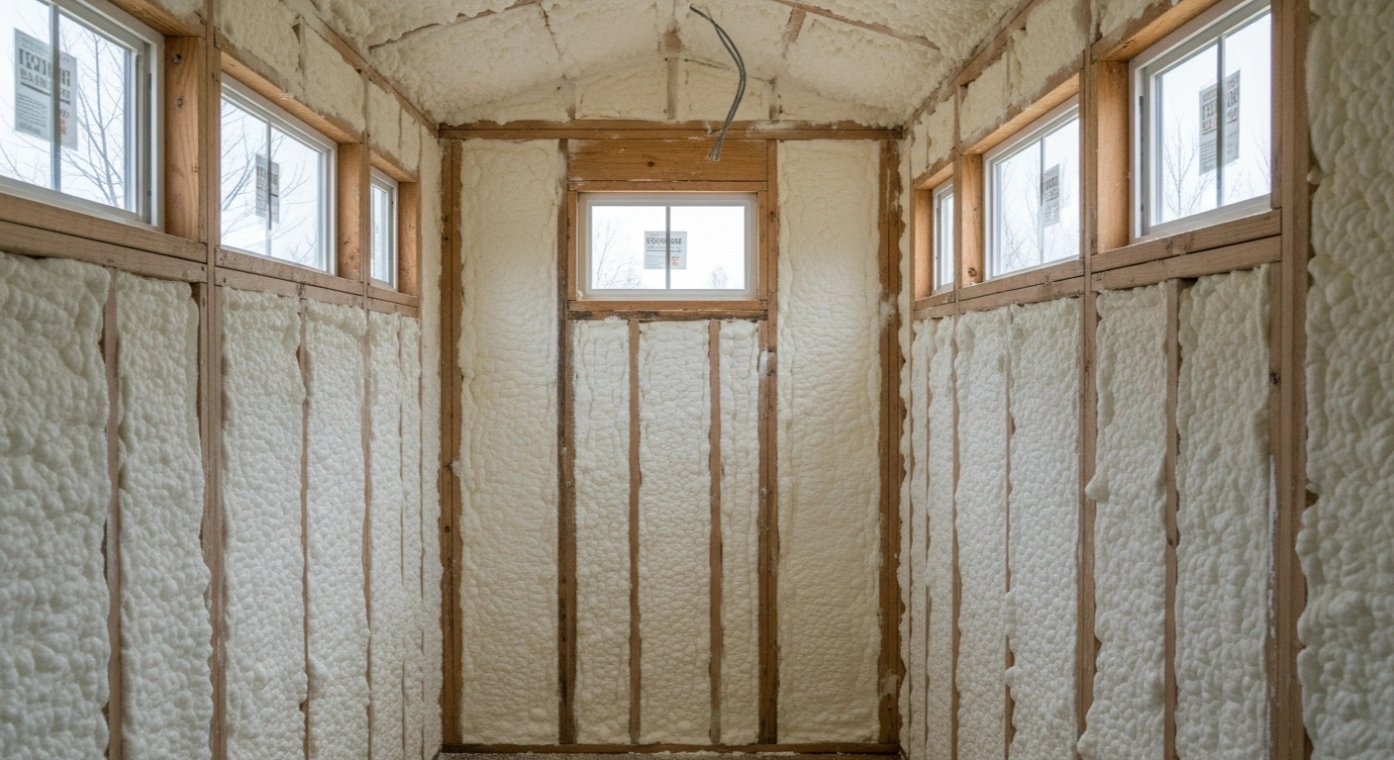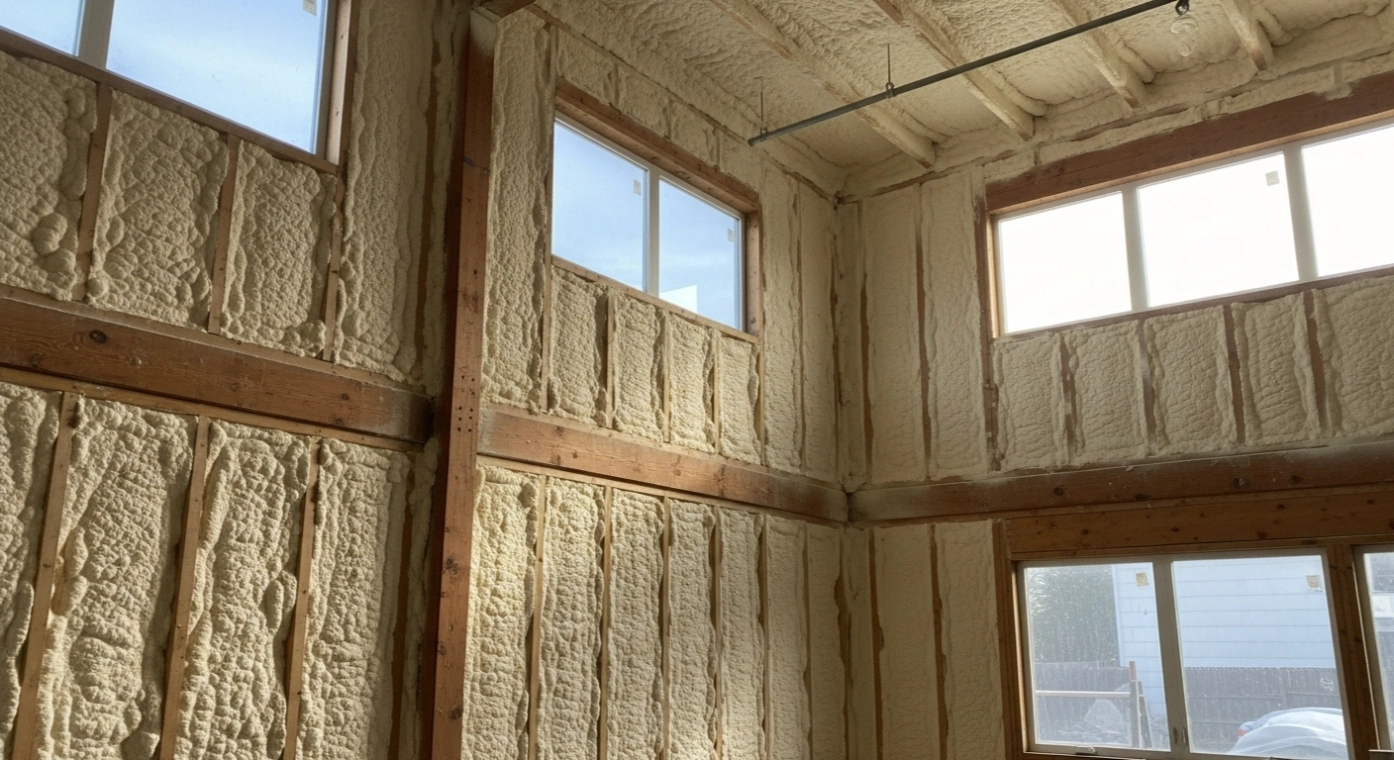
Open-cell spray foam insulation is a sustainable choice because it reduces energy use by sealing air leaks and improving building efficiency. Its lower material density requires less raw input compared to closed-cell foam, which contributes to resource efficiency. The material is breathable, helping manage moisture in climates like the Pacific Northwest, reducing risks of mold and prolonging the building’s lifespan.
This article explains the technical and environmental benefits of open-cell spray foam, compares it to other insulation types, and outlines practical considerations before selecting this option. The insights are based on installation experience in residential and commercial buildings across the Seattle area, where both moisture control and thermal performance are critical.
Open-cell spray foam supports sustainability by lowering heating and cooling demands, which reduces carbon emissions from energy production. Studies show that proper insulation can cut household energy use by 15% to 20% (U.S. Department of Energy, 2023). In Seattle’s damp climate, its vapor permeability allows structures to dry more effectively than closed systems, limiting material degradation.
| Feature | Open-Cell Spray Foam | Closed-Cell Spray Foam | Fiberglass Batt Insulation |
|---|---|---|---|
| Density | ~0.5 lb/ft³ | ~2 lb/ft³ | ~0.6–1.0 lb/ft³ |
| R-value per inch | 3.5–3.7 | 6–7 | 2.9–3.2 |
| Air sealing effectiveness | High | High | Moderate |
| Vapor permeability | High (breathable) | Low (moisture barrier) | Moderate |
| Sound absorption | Strong | Moderate | Weak |
| Renewable material use | Lower raw material demand | Higher raw material demand | Moderate |
| Longevity | 20–30 years | 25–30 years | 15–20 years |
Seattle experiences heavy rainfall and consistent dampness. Open-cell spray foam provides breathability that allows moisture migration without trapping water, reducing risks of rot or mold growth in wood-framed structures. It also improves sound absorption, which benefits dense residential neighborhoods where external noise is common.
Bonus tip: In basements or crawlspaces prone to standing water, closed-cell insulation may perform better due to its moisture barrier. A mixed-application approach is often the most effective.
| Metric | Open-Cell Spray Foam | Common Alternatives |
|---|---|---|
| Typical expansion ratio | 100:1 | Fiberglass: 1:1 |
| Average service life | 20–30 years | Fiberglass: 15–20 years |
| Installation time for 1,000 sq. ft. | 4–6 hours | Fiberglass: 6–8 hours |
| Embodied carbon footprint (kgCO₂e/m², approx.) | 2.5 | Fiberglass: 3.1 |
Bonus tip: During installation, ensure proper ventilation. The curing process releases gases that require controlled air exchange.

Yes, but proper vapor barriers may be required in high-moisture zones.
Wait at least 24 hours for curing and off-gassing to complete.
No, when properly applied it expands and stays in place.
No, it is not a waterproofing system.
Open-cell spray foam offers a sustainable insulation option by combining energy efficiency, reduced material use, and moisture management. Its sound absorption benefits make it ideal for residential neighborhoods. The choice between open-cell and alternatives depends on building structure, climate, and long-term maintenance goals.
For further guidance on open-cell spray foam or other insulation options, contact Cascadia Spray Foam of Seattle at [email protected] or call (425) 386-3500. The team has direct installation experience across residential and commercial properties in Seattle’s climate conditions.
It maintains performance for decades but has slightly lower mechanical rigidity.
Removal is possible but labor-intensive, often requiring specialized tools.
The material is not a food source for pests, but improper sealing may allow nesting.
Once cured, it remains inert and does not release harmful substances.
Routine inspections every few years to confirm integrity and moisture conditions.